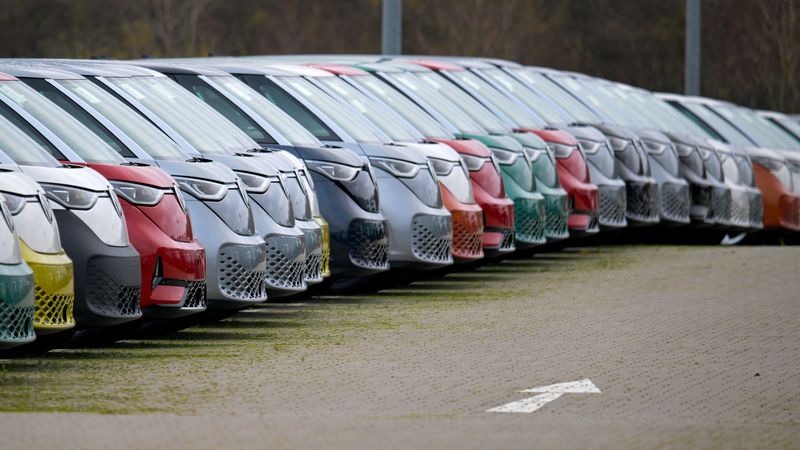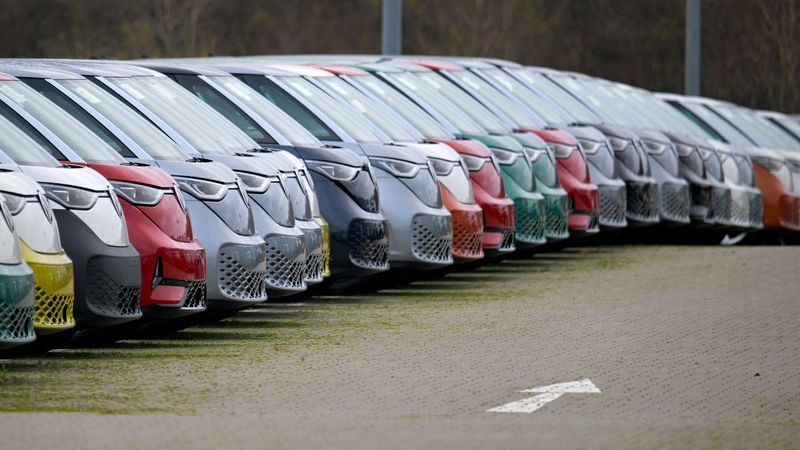
By Victoria Waldersee and Christina Amann
BERLIN (Reuters) – For all its talk of radical change, Volkswagen (ETR:VOWG_p)’s cost-cutting deal in Germany relies heavily on the automaker’s tradition of cooperation between managers and workers, according to details disclosed by company sources.
That has left some investors and analysts questioning whether it can deliver on promises to cut capacity and 35,000 jobs – changes that managers say are vital to the business’s survival amid weak demand and cheap Chinese competition.
The deal was struck days before Christmas, and since workers returned from the holidays unions have been holding meetings across German factories – some with board members in attendance – to explain it, according to two labour sources.
The agreement involves each factory being given its own cost reduction target, with project teams of labour representatives and managers responsible for figuring out how to deliver it and boost productivity, measured by the number of cars produced per worker, according to two sources close to management.
Senior figures from both sides will give progress reports at a quarterly meeting, the management sources added, emphasising that if interim cost reduction targets are not met, negotiations may need to begin again.
It’s a model that bears all the hallmarks of Volkswagen’s tradition of cooperation and compromise, rather than change imposed from the top that might have brought more certainty, but also have run the risk of damaging strikes.
Many questions remain, from how the carmaker will lose so many workers without laying anyone off, to when the promised production capacity cuts will happen, to what the long-term future holds for plants with empty halls.
That has left some investors underwhelmed, with Volkswagen shares trading below levels seen in October, before a plunge in quarterly profits.
“People don’t have the patience to invest in an auto stock that trades predominantly on next year’s earnings, with the hope that 3-5 years out, the company will restore its profitability,” said Patrick Hummel, auto analyst at UBS. “The market will expect them to talk about the building blocks – what is the bottom line impact in 2025?”
The stakes are high. While the Volkswagen group spans brands from the upmarket Audi to the mass-market SEAT and Skoda, its core namesake brand – the bulk of its German business – accounted for more than half of its vehicle sales in 2023.
CUTTING CAPACITY
During protracted talks, unions said the company raised the prospect of closing three to four factories. Volkswagen declined to give a specific figure, but said repeatedly it could not rule plant closures out.
In the final deal, the two sides agreed to end production in 2025 at a Dresden facility, which employs 300 people, and in 2027 at an Osnabrueck plant, employing around 2,300, but committed to finding alternative uses for the sites, which could include new investors.
An all-electric factory in Zwickau will lose one production line but receive new investment in the form of a recycling facility for second-hand combustion and electric vehicles, due to go into production from 2027, according to a labour spokesperson from the factory.
But new investments are contingent on meeting cost-cutting targets, as finance chief Arno Antlitz made clear in recent comments to investors seen by Reuters.
Remaining capacity reductions will come from cutting two production lines at the company’s Wolfsburg headquarters.
Investors and analysts are unclear how well this approach will reduce fixed costs compared with closing plants altogether. Volkswagen has said the deal will save 15 billion euros ($15.6 billion) in the “medium term”, without giving specifics. A spokesperson declined to comment on any interim targets.
“It’s hard to square the super-tough narrative of having reached a tipping point and going in all guns blazing, with the agreement that came out,” said Stephen Reitman, analyst at Bernstein Research who has followed Volkswagen for decades.
‘VULNERABLE AND ACCOUNTABLE’
Uncertain too is how the company will shed 35,000 jobs from its workforce. Volkswagen promised in 2016 to cut 30,000 jobs, but failed to shrink the total size of the workforce – roughly 120,000, then and now – because of hiring in other areas.
It hopes to achieve its target by not replacing workers who retire, and offering early or partial retirement schemes, a labour spokesperson said, highlighting that a clause in the deal that guarantees jobs until 2030 – a win for unions after Volkswagen scrapped a previous job guarantee agreement in September – meant that any departures would be voluntary.
Moritz Kronenberger, portfolio manager at Volkswagen shareholder Union Investment, said that while the deal may look disappointing from the outside, it made deeper cuts than some had expected given unions and local politicians hold veto power on Volkswagen’s supervisory board.
“(CEO Oliver Blume) stuck his neck far out, made big promises, and stirred up a whirlwind, inside and outside the company,” said Kronenberger.
“Blume remains the right CEO and is taking the right measures. But the cost structure of the company needs to look very different in two years. Volkswagen has to show that it’s armed for the future and can make attractive products,” he said, adding: “Blume has made himself vulnerable and accountable.”
($1 = 0.9602 euros)

